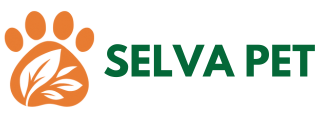When it comes to Natural Ointments for Wounds on Pets, you might wonder how you can help your furry friends heal naturally. In this article, we’ll dive into why using these ointments is a great choice for your pets, explore the basics of wound care, and highlight the best herbal remedies. You’ll learn about soothing balms, the difference between homemade and store-bought options, and what your vet thinks about it all. We’ll also cover safe application tips and what to watch for, ensuring your pets get the best care possible. Let’s get started!
Why Choose Natural Ointments for Wounds on Pets?
When it comes to caring for our furry friends, we all want the best. Natural ointments for wounds on pets have gained popularity, and for good reasons. First, they’re often made from safe and gentle ingredients, essential for our pets’ sensitive skin. These products can promote healing without the harsh chemicals found in many conventional options.
Moreover, natural ointments help reduce inflammation and soothe pain. Pets, like us, appreciate comfort when they’re feeling unwell. Wouldn’t you prefer a soothing balm made from nature rather than something packed with synthetic ingredients? That’s why I always recommend considering natural alternatives first.
Another key point is the potential for fewer side effects. Many commercial ointments can lead to adverse reactions, especially in pets with allergies or sensitive skin. By opting for natural ointments, you minimize these risks and provide a safer healing environment for your pet.
Using natural ointments aligns with a holistic approach to pet care. It encourages us to think about the overall well-being of our animals, not just treating symptoms. When I started focusing on natural remedies, I noticed a significant improvement in my pets’ health and happiness. Let’s dive deeper into how to care for our pets’ wounds using these natural solutions.
Understanding Wound Care for Dogs: The Basics
Wound care for dogs is a crucial skill every pet owner should master. Our pups are curious creatures, always getting into mischief. Understanding the basics of wound care can make a world of difference in their recovery.
First, assess the wound. Is it a minor scrape or something more serious? For minor wounds, cleaning is key. I always keep a bottle of saline solution handy for rinsing out dirt and debris. Gently cleaning the wound helps prevent infection, which is essential for healing.
Next, monitor the wound for signs of infection, such as swelling, redness, or discharge. If you notice any of these symptoms, it might be time to consult a vet. While natural ointments for wounds on pets can help, they’re not a substitute for professional care when needed.
Also, remember to keep the wound covered. Pets can be notorious for licking their wounds, which can introduce bacteria and slow down healing. I often use a bandage or a protective shirt to keep them from accessing the area. It may seem like a hassle, but it’s worth it to ensure a smooth recovery.
Herbal Remedies for Pet Wounds: What Works Best?
Herbal remedies have been used for centuries to treat wounds, and many can be beneficial for our pets too. Certain herbs stand out for their healing properties. Let’s explore some of the best options.
First up is calendula. This lovely flower has natural antiseptic and anti-inflammatory properties. Applying a calendula-infused ointment can help soothe irritated skin and speed up the healing process. It’s gentle enough for even the most sensitive pets.
Another fantastic option is aloe vera. Known for its cooling and soothing effects, aloe vera can be applied directly to minor wounds. Just ensure to use pure aloe vera gel without added ingredients, as some can be harmful to pets.
Chamomile is great for calming inflammation. You can make chamomile tea, let it cool, and use it to rinse the wound. This not only helps with healing but also provides a calming effect for your pet, which can be beneficial during stressful times.
Lastly, raw honey has natural antibacterial properties. When applied to wounds, it creates a protective barrier and promotes healing. Just remember to use it sparingly and ensure it’s safe for your pet to ingest.
Soothing Balms for Pets: Homemade vs. Store-Bought
When it comes to soothing balms for pets, you have two main options: homemade or store-bought. Each has its pros and cons, and I’ve tried both in my journey as a pet owner.
Homemade balms allow you to control the ingredients, ensuring they’re natural and safe. One of my favorite recipes includes coconut oil, shea butter, and a few drops of essential oils like lavender or chamomile. This combination creates a soothing balm that not only helps with wounds but also moisturizes the skin.
However, making your own balms can be time-consuming. That’s where store-bought options come into play. Many companies now offer natural ointments for wounds on pets specifically designed for them. I recommend checking the ingredient list to ensure they’re free from harmful chemicals. Look for products with a short ingredient list, as this often indicates a cleaner product.
Ultimately, the choice between homemade and store-bought balms depends on your preference and lifestyle. If you enjoy DIY projects, go for homemade. If you’re short on time, a reliable store-bought option can work wonders too.
Veterinary-Approved Natural Ointments: What You Need to Know
When considering natural ointments for wounds on pets, it’s essential to consult with your veterinarian. They can recommend products that are effective and safe for your specific pet. In my experience, having a vet’s input can save you time and prevent potential issues down the line.
Veterinary-approved natural ointments often contain a blend of herbal ingredients and essential oils. These products are formulated to be safe for pets while providing the healing benefits of nature. I’ve had great success with ointments that include ingredients like tea tree oil and vitamin E, which promote healing and prevent infection.
It’s also important to follow the instructions provided by your vet. Each product may have specific usage guidelines, and adhering to these can make a significant difference in your pet’s recovery. I always keep a list of my vet’s recommendations handy, just in case I need to reference it quickly.
Finally, don’t hesitate to ask questions. If you’re unsure about a product or its ingredients, reach out to your vet. They’re there to help you navigate the world of pet care and ensure your furry friend gets the best treatment possible.
Holistic Wound Treatment for Animals: A Comprehensive Guide
Holistic wound treatment for animals focuses on the whole pet, not just the wound itself. This approach considers factors like diet, environment, and emotional well-being. Addressing these aspects can lead to better healing outcomes.
First, let’s talk about nutrition. A balanced diet rich in vitamins and minerals supports the body’s healing processes. I always ensure my pets get high-quality food, supplemented with fresh fruits and vegetables when possible. Foods rich in omega-3 fatty acids, like salmon, can also promote healthy skin and reduce inflammation.
Next, consider your pet’s environment. Stress can hinder healing, so creating a calm space is crucial. Providing a quiet area for my pets to relax has significantly impacted their recovery. Soft bedding, gentle music, and minimal disturbances can help them feel safe and secure.
Additionally, emotional support plays a role in healing. Spending quality time with your pet, offering gentle affection, and engaging in play can boost their spirits. I always make it a point to be there for my pets during their recovery, as it strengthens our bond and helps them feel loved.
Lastly, don’t forget about alternative therapies. Acupuncture and massage can be beneficial for pets recovering from wounds. These therapies promote circulation and can alleviate pain. I’ve seen remarkable improvements in my pets’ recovery times when incorporating these holistic methods.
Natural Healing for Cats: Special Considerations
When it comes to natural healing for cats, there are a few special considerations to keep in mind. Cats are unique creatures with different needs than dogs, and understanding these differences can enhance their healing process.
Firstly, cats are often more sensitive to certain herbs and essential oils. For instance, while lavender may be calming for dogs, it can be overwhelming for cats. Always do your research and consult with a vet before introducing any new remedies to your feline friend.
Additionally, cats tend to be more independent. They may not always appreciate having their wounds treated, so gentle handling is essential. Using a soft voice and offering treats during the process can help ease their anxiety. Patience is key!
Another important aspect is to ensure that any ointments or balms are specifically formulated for cats. Some ingredients that are safe for dogs can be toxic to felines. Always read labels carefully and prioritize products designed for cats.
Finally, keep an eye on their behavior. Cats may hide signs of pain or discomfort, so being observant is crucial. If you notice any changes in their eating, grooming, or activity levels, it’s best to consult with a vet. Early intervention can make a significant difference in their recovery.
Organic Pet Wound Care: Benefits and Tips
Organic pet wound care is an excellent choice for pet owners looking to provide the best for their furry friends. The benefits of using organic products are numerous, and I’ve experienced them firsthand.
First and foremost, organic products are free from synthetic chemicals and pesticides. This means they’re gentler on your pet’s skin and less likely to cause adverse reactions. I always opt for organic ointments when treating my pets, ensuring their safety and comfort.
Another benefit is the environmental impact. Choosing organic products supports sustainable farming practices and reduces the use of harmful chemicals in our ecosystems. It feels good to know that I’m making a positive choice for both my pets and the planet.
When selecting organic products, look for certifications. This ensures that the product meets specific standards and is genuinely organic. I often check for labels from reputable organizations to verify the quality of the ointments I choose.
Additionally, consider making your own organic remedies at home. Simple recipes using organic ingredients can be incredibly effective. For example, a mixture of organic coconut oil and beeswax can create a nourishing balm for minor wounds. Experimenting with different combinations can lead to discovering what works best for your pet.
Non-Toxic Pet Ointments: Safety First!
Safety should always be a priority when it comes to pet care. Non-toxic pet ointments are essential for ensuring that your furry friend can heal without the risk of harmful side effects. It’s crucial to choose products that are safe for pets.
Before purchasing any ointment, always read the label. Look for non-toxic ingredients and avoid products with harmful chemicals like parabens, sulfates, and artificial fragrances. Sticking to simple, recognizable ingredients is the best way to ensure my pets’ safety.
Additionally, be cautious with essential oils. While many can be beneficial, some are toxic to pets. For instance, tea tree oil, while great for humans, can be harmful to cats and dogs if ingested or applied in high concentrations. Always consult with a vet before using any essential oils on your pets.
Another tip is to observe your pet after applying any new ointment. Watch for signs of irritation or allergic reactions, such as redness or swelling. If you notice anything unusual, discontinue use immediately and consult your vet.
Lastly, consider keeping a first aid kit stocked with non-toxic options. Having a range of safe ointments and remedies on hand can make a significant difference in emergencies. I always feel more prepared knowing that I have the right tools to care for my pets.
How to Apply Natural Ointments for Wounds on Pets
Applying natural ointments for wounds on pets can be a straightforward process, but it’s essential to do it correctly. I’ve developed a routine that works well for my pets, and I’m excited to share it with you.
First, start by cleaning the wound. Use a saline solution or a gentle antiseptic to remove any dirt or debris. This step is crucial for preventing infection, so don’t skip it! Gently pat the area dry with a clean cloth.
Next, take a small amount of the natural ointment and apply it directly to the wound. I usually use my fingers or a clean cotton swab for this. Make sure to cover the entire area, but avoid applying too much. A thin layer is often sufficient.
Once the ointment is applied, consider covering the wound with a bandage or gauze. This helps protect it from dirt and bacteria while allowing it to heal. I always secure the bandage with medical tape, making sure it’s snug but not too tight.
Afterward, keep an eye on your pet to prevent them from licking the area. If they’re persistent, you might need to use an Elizabethan collar or a protective shirt to keep them from accessing the wound. It’s better to be safe than sorry!
Lastly, monitor the healing process. Check the wound daily for any signs of infection or irritation. If you notice anything concerning, don’t hesitate to reach out to your vet for advice.
Common Mistakes in Pet First Aid Ointments
Even the most experienced pet owners can make mistakes with first aid ointments. Here are some common pitfalls to avoid.
One major mistake is using human ointments on pets. While some ingredients may be safe, many can be harmful to animals. For example, products containing hydrocortisone can be dangerous for pets. Always stick to formulations specifically designed for animals.
Another mistake is not following the instructions. Each product may have specific guidelines for application and frequency. Ignoring these instructions can lead to ineffective treatment or worsen the condition.
Additionally, some pet owners may overlook the importance of cleaning the wound properly. Rushing this step can introduce bacteria and lead to infection. Always take your time to ensure the area is clean before applying any ointments.
Lastly, don’t ignore changes in your pet’s behavior. If they seem unusually lethargic, refuse to eat, or show signs of pain, consulting a vet is crucial. Early intervention can prevent complications and ensure your pet receives the care they need.
When to Consult a Vet: Signs Your Pet Needs Help
Knowing when to consult a vet can be challenging, especially for new pet owners. However, specific signs indicate your pet may need professional help.
First, if the wound appears deep or won’t stop bleeding, it’s time to seek veterinary care. Deep wounds may require stitches or more advanced treatment to ensure proper healing. Don’t hesitate to act quickly in these situations.
Another sign to watch for is swelling or redness around the wound. If you notice these symptoms, it could indicate an infection. Prompt treatment is essential to prevent the infection from spreading.
Additionally, if your pet shows signs of pain, such as whining, limping, or reluctance to move, consulting a vet is worth it. Pain can indicate a more serious issue that requires professional attention.
Lastly, if you’re unsure about the severity of the wound or the appropriate treatment, it’s always better to be safe than sorry. Trusting your instincts and seeking veterinary advice can prevent potential complications down the line.



